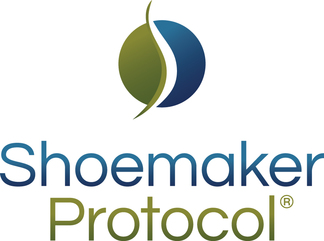Neuroquant II: April 12, 2016 Paper
.jpg)
Reduction in Forebrain Parenchymal and Cortical Grey Matter Swelling across Treatment Groups in Patients with Inflammatory Illness Acquired Following Exposure to Water-Damaged Buildings McMahon SW , Shoemaker RC and Ryan JC
Abstract
Exposure to the complex mixture of inflammagens and toxigenic microbes growing in water-damaged buildings (WDB) can lead to a chronic inflammatory response syndrome (CIRS). Many CIRS patients exhibit a neurological component of illness that includes structural brain changes. This study shows some of those structural brain changes are potentially reversible when patients are removed from the WDB environment and follow sequential steps of a published treatment protocol. We evaluated MRIs from 91 subjects classified into four groups: controls, untreated, partially treated and fully treated/recovered CIRS-WDB patients using the MRI volumetric software NeuroQuant®. The current study reinforced previous findings of increased forebrain parenchymal, cortical gray matter and pallidum volumes, as well as decreased caudate nucleus volumes in untreated CIRS patients compared to controls. All changes were found bilaterally. When an ANOVA was performed on brain structures across all patient classes, statistically significant decreases were seen in forebrain and cortical gray matter between untreated and fully treated/recovered patients as these structures trended towards control levels after sequential treatment. Both the caudate and pallidum volumes also trended towards control values but were not significant by ANOVA. These data are consistent with clinical improvement of executive functioning seen in patients as they progressed through the treatment steps, suggesting that volumetric brain imaging is a useful tool for monitoring therapy longitudinally.
Featured Resources
Shoemaker Protocol™ Quick Start:
The 3 initial steps to determine if mold is affecting you One of the most common questions we hear is, “how do I know if I have mold illness?” Rest assured, if you’re asking this question, you’ve come to the right place.
Lyme Biomarkers Publication Now Available!
Illnesses characterized by chronic fatigue are often defined by symptoms and not by objective biomarkers that support both diagnosis and treatment. Without readily obtained biomarkers, clinical management can be compromised by lack of certainty. This uncert...
Progene DX- Pathway to Certainty Part 1
What you need to know about transcriptomics: Learning a new genomics language; learning new insights on disease
MRA Genomics November 25, 2016
ABSTRACT: Exposure to the microbial growth in Water Damaged Buildings (WDB) can result in a chronic, multi-symptom, multisystem illness, which can last years, termed Chronic Inflammatory Response Syndrome (CIRS). Symptoms of CIRS include but are not limited...
Indoor Environmental Professionals Panel of Surviving Mold CONSENSUS STATEMENT
Medically sound investigation and remediation of water-damaged Buildings in cases of CIRS-WDB Larry Schwartz CIEC, BSME, MBA, Greg Weatherman CMC, Michael Schrantz CIEC, CMI, BPI-BA/EP, Will Spates CIAQP, CIEC, Jeff Charlton, ACIEC, AACIEH, Keith Berndtson...
Related Resources
- CIRS House Hunting Guide
- Certified Practitioner Paula Vetter Presents: "Mold Illness: Surviving and Thriving - A Recovery Manual for Patients and Families Impacted by CIRS"
- 06172014 Structural Brain Abnormalities in Patients with Inflamatory Illness acquired Following Exposure to Water Damaged Buildings A Volumetric MRI Study Using Neuroquant
- 02272013 VIP Corrects CIRS Acquired Following Exposure to Water-Damaged Buildings
- 08152015 Transcriptomic Signatures in Whole Blood of Patients Who Acquire CIRS Following an Exposure to the Marine Toxin Ciguatoxin.
- FAQ Video #4: Exercises and Capillary Hypoperfusion
- 2013 Healthy Home Clinic
- Dr. Mercola Interviews Dr. Shoemaker
- Lyme_Chemokines_Arthritis_CNS_01_19_14
- TREG Lyme Arthritis




.jpg)